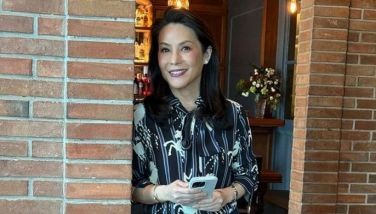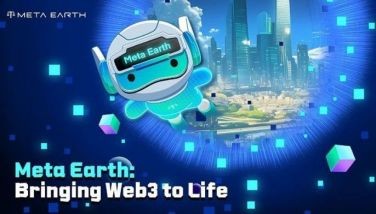August 21
The dice of fate has been rolled, and each of us has been assigned a role to play. Ours is to keep lighting the beacon-light of unity for those who have lost their way. Ours is to articulate the fervent hopes of a people who have suddenly lost their voices. Ours is to adopt the solid stance of courage in the face of seemingly hopeless odds so that hope, no matter how dim or distant, will never banish from sight. — Benigno “Ninoy” S. Aquino Jr.
When I was growing up, our science teachers preached as gospel truth that atoms were the smallest particles known to humankind. Atoms, they reasoned, are so small that they could never be seen even through the lens of the most sophisticated microscope. They also taught us that the existence of the smallest building blocks of matter were predicated on scientific deduction and inference and a hint of faith in the unseen.
Thirty odd years later, our children know more about the atom as contrary to our science lessons circa ’70s, the atom is no longer the smallest particle known to humankind. With the advent of the scanning tunneling microscope, they have managed to see more and learn more.
Nostalgia aside, there is much to be gained from learning those lessons, when we did — as opposed to just reading them off the textbooks of today. The “answers” of today’s generations were “questions” that we struggled with during our time. We who knew and lived through the problems of the times appreciate the answers that came with time.
For people from my generation, there is one more thing that we knew better — that is, that “atom” stood for and signified something more: the August Twenty-One Movement.
On 21 August 1983, then Senator Ninoy Aquino was assassinated, as he deplaned on the tarmac, after a three-year exile. It shocked the people’s senses and they trooped in droves to pay their respects: in his blood-soaked all-white attire. The benefit of retrospection would reveal years later that that would be the dictatorship’s denouement: there was no denying the dictator’s downfall.
This is where “scientific certainty” differs from “historical truth.” There are things that we know better, only because we know more about them. Our understanding and comprehension of most things and scientific phenomena are only for the time being.
Historical truths, however, are not subject to such “refinements” — without falling into the trap of and offend by being revisionist. That day and the days that followed remain seared in my memory — and so is the indignation. The silver lining of the fact that a hero was engendered by those times comes from the context that was presaged by the dark clouds of the dictatorship.
Sadly, it appears that these historical truths have yet to be fully comprehended. The sounds of the gunshots, from 28 years ago, no longer reverberate with the same painful clang. Ask today’s youth about the most significant event that happened this month, and they’d probably mention Paris Hilton’s visit, completely omitting and oblivious to the blood that was spilled on August 21.
And so, the question begs to be asked: what are we teaching our young?
I can concede that today’s youth know more about the world, but do they know what matters? (A dangerous statement that will not resonate well with the more politically conscious of our young lot.) It is, however, a challenge that I hope that more of our young would take up.
Admittedly, with the demise of the dictatorship, we lost a unifying cause against which we fought and struggled. It was easy to create heroes, but the virtue of being heroic continues to be and remains relevant.
Many years ago, another national hero reminded us that the youth are our nation’s future. To this aphorism, I offer a few caveats. First, our nation’s future will be wayward and our efforts waylaid, if we do not have a clear understanding of the lessons of the past. Second, youth is something that we lose with time — when we rise to the challenge of leadership, we actualize something transcendent in ourselves, one that we should never lose.
* * * *
What’s in a date? Curious as to what the significance of the day was for the ordinary Filipino, I randomly asked some people (four to be exact) what August 21 meant to them. The reactions I received were mainly blank stares and quizzical looks. A 25-year-old law student did manage to blurt out: “a holiday?” While a 27-year-old secretary suggested “National Heroes Day?” (which the nation will be celebrating on August 29). Close, but no cigar.
All in all, I thought that the responses were ironic — and (mostly) sad. Ironic because August 21 is the day of deliverance in modern Philippine history: the flashpoint that served as the proximate cause, not only for the downfall of a dictator but for the resurgence of democracy in our country. And sad because people do not seem to know (or much less, remember).
* * * *
What’s in a name? During the early days of the P-Noy administration, people who corresponded with the President were not sure how to properly address him. Should it be the traditional Filipino way of first name with the mother’s family name as the middle initial (i.e., Benigno C. Aquino III), or do we include the second name as well (i.e., Benigno Simeon C. Aquino III)? To set the record straight, the Palace came out with an order saying that the President should be addressed as Benigno S. Aquino III. This style is in conformity with the American way of using the second given name as the middle initial (e.g., the “H” in Barrack H. Obama stands for his second name “Hussein” while his mother’s name is Ann Dunham). While the American-style was previously used by two former Philippine Presidents, Manuel L(uis) Quezon and Jose P(aciano) Laurel, I think that this was primarily a way by which P-Noy wanted to honor the memory of his martyred father whose heroic act made the Filipino hope again.
“Unless we remember, we will never understand.” — E. M. Forster
* * * *
E-mail:deanbautista@yahoo.com
- Latest
- Trending






















